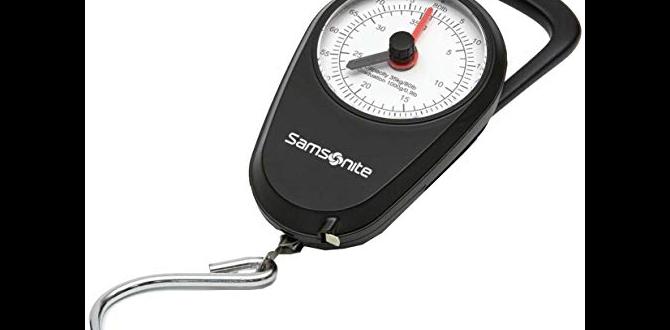Austria Airport to City Transport: Essential Guide
Arriving in Austria? Getting from the airport to your city destination is easy and stress-free! This guide covers the quickest, most comfortable, and affordable ways to reach popular Austrian cities like Vienna, Salzburg, and Innsbruck from their respective airports, ensuring a smooth start to your adventure.
Planning a trip to Austria is exciting! Whether you’re dreaming of Vienna’s imperial palaces or Salzburg’s musical heritage, getting from the airport to your hotel should be the last thing on your mind. Many travelers worry about this first step, especially in a new country. But don’t fret! We’ve got you covered with clear, simple steps to make your journey from Austria’s airports to the heart of its cities a breeze. Let’s explore your best transport options so you can relax and enjoy the Austrian hospitality from the moment you land.
Getting from Vienna International Airport (VIE) to the City
Vienna International Airport (VIE) is Austria’s largest and busiest airport, serving as the main gateway for most international travelers. Fortunately, it offers excellent transport links to the city center.
Option 1: The City Airport Train (CAT)
The City Airport Train (CAT) is the fastest and most direct way to reach Vienna’s city center (Wien Mitte station).
Frequency: Runs every 30 minutes.
Journey Time: Approximately 16 minutes.
Comfort: Climate-controlled carriages, ample luggage space, and comfortable seating.
Tickets: Can be purchased online, at CAT ticket machines at the airport, or on board. Consider the Vienna Pass if you plan on visiting many attractions, as it often includes a CAT ticket.
Pros: Speed, convenience, direct city center access.
Cons: It’s the most expensive option.
Option 2: S-Bahn (Suburban Train)
The S-Bahn is a more budget-friendly option and a great way to experience local public transport.
Lines: S7 is the primary line serving the airport.
Frequency: Generally runs every 30 minutes, but check timetables.
Journey Time: Around 25 minutes to Wien Mitte, and longer to other city stations.
Tickets: Requires a ticket valid for Vienna’s core transport zone (Kernzone Wien). You can purchase single tickets, day passes, or use your existing public transport passes if they cover the zone. Tickets can be bought at ÖBB ticket machines at the airport.
Pros: Cost-effective, frequent service, connects to the wider Vienna public transport network.
Cons: Slightly longer journey time than the CAT, may involve more stops.
Option 3: Airport Buses (Vienna Airport Lines)
Several bus lines operate from VIE, offering direct routes to various points in Vienna.
Lines: Popular routes include VAL 1 to Westbahnhof (Western Railway Station), VAL 2 to Morzinplatz/Schwedenplatz, and VAL 3 to Donauzentrum.
Frequency: Varies by line, generally every 30-60 minutes.
Journey Time: Approximately 20-45 minutes, depending on the destination and traffic.
Tickets: Purchase online, from bus drivers, or at ticket counters at the airport.
Pros: Convenient for reaching specific areas of Vienna not directly served by the CAT or S-Bahn, often a good balance of cost and convenience.
Cons: Journey times can be affected by traffic.
Option 4: Taxis and Ride-Sharing Services
Taxis and services like Uber are readily available outside the arrivals halls.
Availability: 24/7.
Journey Time: Around 20-30 minutes to the city center, depending on traffic.
Cost: This is the most expensive option, with prices varying significantly based on traffic, time of day, and your specific destination.
Pros: Door-to-door service, convenient for groups or those with a lot of luggage.
Cons: Highest cost, susceptible to traffic delays.
Option 5: Rental Cars
If you plan to explore beyond Vienna, renting a car at VIE is a good choice.
Availability: Major car rental companies have desks at the airport.
Pros: Flexibility for onward travel and exploring the Austrian countryside.
Cons: Parking in Vienna can be challenging and expensive; not ideal if you’re staying within the city.
Table: Vienna Airport (VIE) Transport Options Summary
| Transport Option | Est. Journey Time | Est. Cost (EUR) | Frequency | Best For |
| :——————— | :—————- | :————– | :—————– | :——————————————- |
| City Airport Train (CAT) | 16 minutes | 12-15 | Every 30 minutes | Speed, direct city center access |
| S-Bahn (S7) | 25 minutes | 4-5 | Every 30 minutes | Budget travelers, connecting to public transit |
| Airport Buses (VAL) | 20-45 minutes | 7-10 | Every 30-60 mins | Specific destinations, cost-effective |
| Taxi/Ride-Sharing | 20-30 minutes | 40-60+ | On demand | Convenience, groups, heavy luggage |
| Rental Car | Varies | Varies | On demand | Exploring beyond Vienna |
Getting from Salzburg Airport (SZG) to the City
Salzburg Airport (SZG), also known as Salzburg W. A. Mozart Airport, is smaller and closer to the city than Vienna’s. Public transport options are efficient and connect you quickly to the Mozart city.
Option 1: Public Buses
The most common and convenient way to reach Salzburg’s city center from the airport is by public bus.
Lines: Bus lines 2 and 10 operate directly from the airport.
Frequency: Buses run frequently, typically every 10-15 minutes during the day.
Journey Time: Approximately 20-30 minutes to the city center and main train station (Salzburg Hauptbahnhof).
Tickets: You can purchase tickets at the airport’s ÖBB travel center, from ticket machines, or directly from the bus driver (though this may be slightly more expensive). A standard single ticket for public transport within Salzburg is usually sufficient.
Pros: Affordable, frequent service, direct routes to key city points.
Cons: Can be crowded during peak times.
Option 2: Taxis
Taxis are available outside the terminal building.
Availability: Readily available.
Journey Time: Around 15-20 minutes to the city center.
Cost: More expensive than the bus, typically around €30-€40.
Pros: Door-to-door service, comfortable, quick.
Cons: Higher cost.
Option 3: Rental Cars
Like VIE, SZG offers rental car services.
Availability: Several car rental companies are present at the airport.
Pros: Freedom to explore the surrounding Salzburg Lake District and Austrian Alps.
Cons: Parking in Salzburg’s old town requires careful planning and can be costly.
Table: Salzburg Airport (SZG) Transport Options Summary
| Transport Option | Est. Journey Time | Est. Cost (EUR) | Frequency | Best For |
| :————— | :—————- | :————– | :————- | :————————————- |
| Public Bus | 20-30 minutes | 2-3 | Every 10-15 mins | Budget travelers, quick city access |
| Taxi | 15-20 minutes | 30-40 | On demand | Convenience, groups, direct to hotel |
| Rental Car | Varies | Varies | On demand | Exploring beyond Salzburg |
Getting from Innsbruck Airport (INN) to the City
Innsbruck Airport (INN), also known as Kranebitten Airport, is located southwest of the city center and is well-connected. Its proximity makes for a very quick transfer.
Option 1: Public Buses
The most convenient and cost-effective way to reach Innsbruck city center.
Line: The “F” bus line (also known as the Airport Bus) connects the airport directly to the city center and the main train station (Innsbruck Hauptbahnhof).
Frequency: Operates frequently, usually every 15 minutes during the day.
Journey Time: A very short trip, around 10-15 minutes.
Tickets: Can be purchased at the airport information desk, ticket machines near the bus stop, or directly from the driver. A standard public transport ticket for Innsbruck is required.
Pros: Very fast, cheap, frequent, and direct.
Cons: Can be a bit crowded during peak seasons.
Option 2: Taxis
Taxis are available right outside the terminal.
Availability: Easily accessible.
Journey Time: About 10-15 minutes to the city center.
Cost: A reasonable fare, generally around €15-€25.
Pros: Quick, comfortable, door-to-door service.
Cons: More expensive than the bus.
Option 3: Rental Cars
Innsbruck is a gateway to the Alps, making car rental a popular choice for many.
Availability: Major rental companies are at the airport.
Pros: Ideal for exploring the surrounding mountain regions, ski resorts, and Tirol.
Cons: Can be expensive; parking in Innsbruck city center can be regulated and paid.
Table: Innsbruck Airport (INN) Transport Options Summary
| Transport Option | Est. Journey Time | Est. Cost (EUR) | Frequency | Best For |
| :————— | :—————- | :————– | :————- | :——————————————– |
| Public Bus (“F”) | 10-15 minutes | 2-3 | Every 15 mins | Speed, budget, direct city center access |
| Taxi | 10-15 minutes | 15-25 | On demand | Convenience, direct to hotel, comfort |
| Rental Car | Varies | Varies | On demand | Exploring the Alps and Tirol region, freedom |
General Tips for Airport Transfers in Austria
No matter which Austrian airport you arrive at, a few general tips can make your journey smoother, especially if you’re traveling with children or require specific comfort aids.
Planning Ahead is Key
Check Timetables: Always verify the latest public transport schedules, especially if arriving late at night or on weekends. The official websites for the individual airports or the national rail service (ÖBB) are excellent resources.
Consider Your Destination: If your hotel isn’t near a major transport hub (like Wien Mitte or Salzburg Hauptbahnhof), a taxi or ride-sharing service might be more convenient than navigating multiple transfers with luggage.
Luggage and Comfort
Ample Space: Most trains and dedicated airport shuttles are designed with travelers in mind, offering space for luggage. Buses might be tighter, especially during peak hours.
Comfort Aids: If you or a family member require comfort aids like adult diapers or child diapers for long journeys or peace of mind, ensure you pack enough. Travel-size packs can be useful for shorter transfers, but for longer trips, consider discreet and absorbent options. Brands known for comfort and reliability can make a significant difference in stress-free travel. Companies often offer various absorbency levels and sizes.
Ticket Purchases
Online vs. On-Site: Purchasing tickets online in advance can sometimes save money or guarantee a seat, especially for faster services like the CAT. However, for local buses and trains, buying on arrival is usually straightforward.
Public Transport Passes: If you plan to use public transport extensively within the city, look into day passes or multi-day tickets. These can be more economical than single tickets and offer unlimited travel within the designated zones.
Navigating with Children
Stroller Space: Public transport in Austria generally accommodates strollers, but be prepared for potential crowding. Buses often have designated areas, and trains usually have wider doors.
Snacks and Entertainment: For the transfer, having snacks and simple entertainment for children can make the journey much more pleasant.
Frequently Asked Questions (FAQ)
Q1: What is the cheapest way to get from Vienna Airport to the city?
A1: The cheapest way is typically using the S-Bahn (line S7) as it is covered by standard public transport tickets for Vienna’s core zone, which are significantly less expensive than dedicated airport services like the CAT.
Q2: How do I buy public transport tickets at Austrian airports?
A2: Tickets can usually be purchased at ÖBB (Austrian Federal Railways) ticket machines, airport information desks, or sometimes directly from the driver on buses. For longer train journeys or specific passes, booking online via the ÖBB website is recommended.
Q3: Is it easy to travel with a lot of luggage from the airport?
A3: Yes, especially on trains like the CAT in Vienna or S-Bahn services which are designed for passengers with luggage. Buses can be more challenging if they are very crowded. Taxis and rental cars offer the most convenience for heavy luggage.
Q4: Can I use my public transport pass from the city to get from the airport?
A4: This depends on the pass and the airport. For Vienna, if your pass covers Vienna’s core transport zone (Kernzone Wien), the S-Bahn to the city will be covered. For Salzburg and Innsbruck, standard city transport passes usually cover the short airport transfer buses. Always check the zone validity of your pass.
Q5: How late do airport transfer services run in Austria?
A5: Major airports like Vienna have 24/7 transport options, including taxis and some S-Bahn services, though frequency decreases significantly overnight. Dedicated airport trains like the CAT have specific operating hours, so always check their schedules. Bus services vary but are generally more frequent during daylight hours.
Q6: What if I need special assistance or travel with a medical condition?
A6: Austrian public transport is generally accessible. For specific needs, it’s best to contact the transport provider or airport directly in advance. If you require comfort aids like absorbent products, ensure you have an adequate supply for your journey, considering they are discreet and reliable for travel.
Q7: Are ride-sharing services like Uber available at all Austrian airports?
A7: Ride-sharing services are generally available at Vienna International Airport (VIE) and are becoming more common at Salzburg (SZG) and Innsbruck (INN). However, availability can fluctuate. Taxis remain a consistently reliable option at all these airports.
Conclusion
Navigating from Austria’s airports to your chosen city is a straightforward and stress-free experience thanks to the country’s excellent public transport infrastructure. Whether you prioritize speed and convenience with options like Vienna’s CAT, budget-friendly choices like Salzburg’s buses, or the swift connectivity of Innsbruck’s “F” line, there’s a solution tailored to your needs and budget.
Remember to check schedules, consider your final destination within the city, and pre-purchase tickets if it offers savings or convenience. For families or individuals who require extra comfort and reliability, packing discreet and effective personal care items like adult or child diapers ensures a more relaxed journey. With this guide, you’re well-equipped to seamlessly transition from touchdown to the enchanting streets of Austria. Enjoy your trip!






